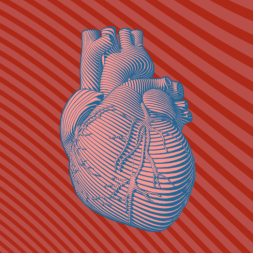Do you struggle with documentation as a nurse practitioner? Compiling your physical exam findings into a succinct statement or two isn’t always easy. You must use language appropriate to the body system to convey your exam so that your notes make sense to other providers. You must also make sure to cover the components of each system relevant to the patient’s presentation. If you’re a nurse practitioner who could use a documentation brush up, check out this quick guide to documenting a cardiovascular exam.
The cardiovascular system consists of more than just the heart. For example, there are findings like jugular venous distention and peripheral pulses to note. Today, however, we will focus on the We will cover other findings, such as circulation to the extremities in the related parts of our documentation series here on ThriveAP.
Here’s a quick guide to documenting an exam of the heart.
What You’re Looking For
The main elements of the heart exam include:
- Observation – Look for jugular venous distention. Note any obvious chest deformities (we will discuss documentation of these findings in later parts of our series).
- Palpation – Place your hand on the patient’s chest so that it covers the heart, feeling for the point of maximum impulse.
- Auscultation – Auscultate for heart sounds, noting the sounds at different points in the cardiac cycle. Listen for extra heart sounds, gallops, murmurs, or rubs. Auscultate the carotid arteries (we will discuss documentation of this finding in the neck exam).
Unlike some other bodily systems, percussion is omitted from the cardiovascular exam. A quiet environment is essential for a thorough heart exam as this allows the examiner to auscultate heart sounds adequately.
Buzzwords to Know
- Point of Maximum Impulse (PMI) – The PMI is the area on the chest where the cardiac impulse can be best felt. The PMI is typically visible in the fifth intercostal space. Displacement of the impulse can signal underlying pathology.
- Rubs – Creaky, scratchy noises heard upon cardiac auscultation. These sounds are produced when the pericardium becomes inflamed.
Sample Normal Exam Documentation
Documentation of a basic, normal heart exam should look something along the lines of the following:
The external chest is normal in appearance without lifts, heaves, or thrills. PMI is not visible and is palpated in the 5th intercostal space at the midclavicular line. Heart rate and rhythm are normal. No murmurs, gallops, or rubs are auscultated. S1 and S2 are heard and are of normal intensity.
Sample Abnormal Exam Documentation
While you won’t use all of these abnormal elements in documenting a single heart exam, here are a few atypical findings you may note:
- Tachycardia, bradycardia
- Irregular rhythm
- Murmurs (systolic, diastolic)
- Extra heart sounds (S3, S4)
- Displaced PMI
- External chest appearance (asymmetry, scars, signs of trauma, cardiac devices)
Check out ThriveAP’s guide to documenting the basics of documenting a respiratory exam to complete your notes on examination of the chest.
**Note: This is not meant to be an exhaustive guide to examination and documentation. You are responsible for performing an appropriate physical exam and documenting your findings on each patient you interact with.


